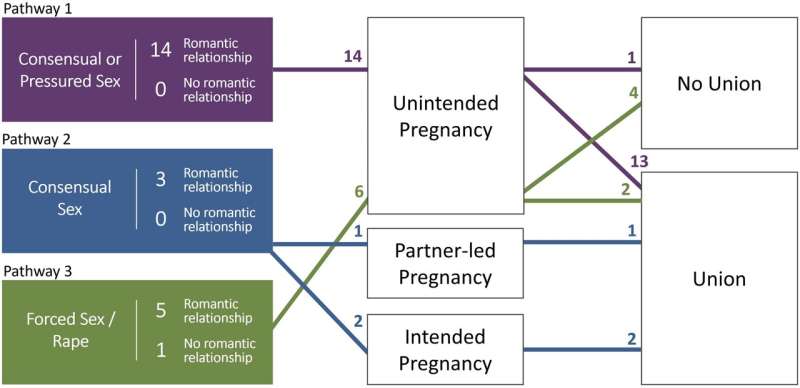This article has been reviewed according to Science X's editorial process and policies. Editors have highlighted the following attributes while ensuring the content's credibility:
fact-checked
peer-reviewed publication
trusted source
proofread
Child marriage a key factor in Laos' high adolescent pregnancy rate

Laos has the highest rate of young female pregnancies in Southeast Asia, but until recently the underlying reasons have not been well understood.
New research has revealed that the acceptance of child marriages, a lack of sexual health knowledge, power imbalances in relationships, alcohol use leading to forced sex, and girls' lack of agency contribute to pregnancies before the age of 18.
According to the study, "Understanding diverse pathways to adolescent pregnancy in Lao People's Democratic Republic," published in PLOS Global Public Health, young marriages are regarded as the most acceptable response to adolescent pregnancy outside a union, and girls view marriage as an acceptable alternative to education.
Once married, there is also societal pressure on couples to prove their fertility.
Interviews suggested that girls viewed sexual health information as being "only for married people" as many did not receive much information on reproductive health until after they were married or had given birth.
"The shopkeepers in the market and many people, especially [older] friends I know ... said if we are staying out late and playing around, we will have a baby. But I don't really understand what they mean," one participant said.
Burnet Institute Senior Research Officer, Dr. Marie Habito, said understanding the context that led to girls becoming pregnant could help policymakers develop better programs to meet their needs.
"One of the key contributions of this study is that it shed light on adolescent girls' personal experiences," she said.
"This underscores the importance of giving adolescents space to communicate their needs and share their thoughts and expertise on matters that concern them."
The male partner's control over reproductive decision-making was also a key factor in young pregnancies, including the decision not to use condoms.
Girls who participated in the study reported that their husbands viewed condoms as inappropriate once married as they associated condoms with sexually transmitted infections and marital infidelity.
Researchers found many of the girls' first sexual experiences happened under the influence of alcohol, or with assurances that the man involved would take responsibility for a potential pregnancy through marriage.
"Similar to our findings from Indonesia, in Laos, adolescent pregnancy was either a cause or consequence of child marriage and early union," Dr. Habito said.
"Our paper draws attention to the need for all adolescents to have access to comprehensive sexual education, to address harmful substance use—primarily alcohol—that leads to pressured and forced sex, and for programs to be developed that respond to sociocultural and financial drivers of child marriage and early union."
More information: Marie Habito et al, From 'Pen Sao' to 'Tue Pa': Understanding diverse pathways to adolescent pregnancy in Lao People's Democratic Republic through qualitative investigation with girls in Vientiane Capital, Vientiane Province, and Luang Namtha, PLOS Global Public Health (2024). DOI: 10.1371/journal.pgph.0002825




















